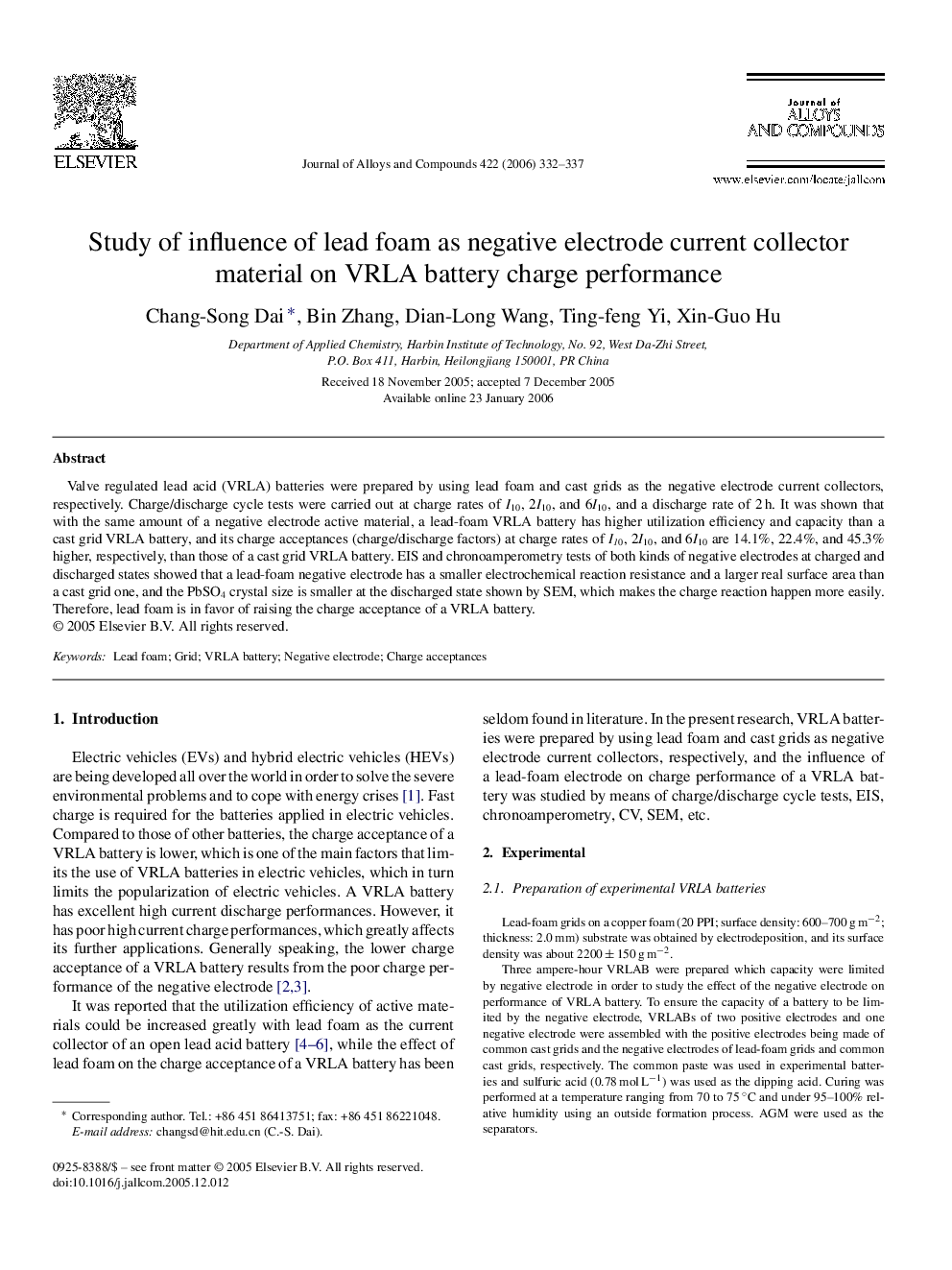| Article ID | Journal | Published Year | Pages | File Type |
|---|---|---|---|---|
| 1626975 | Journal of Alloys and Compounds | 2006 | 6 Pages |
Valve regulated lead acid (VRLA) batteries were prepared by using lead foam and cast grids as the negative electrode current collectors, respectively. Charge/discharge cycle tests were carried out at charge rates of I10, 2I10, and 6I10, and a discharge rate of 2 h. It was shown that with the same amount of a negative electrode active material, a lead-foam VRLA battery has higher utilization efficiency and capacity than a cast grid VRLA battery, and its charge acceptances (charge/discharge factors) at charge rates of I10, 2I10, and 6I10 are 14.1%, 22.4%, and 45.3% higher, respectively, than those of a cast grid VRLA battery. EIS and chronoamperometry tests of both kinds of negative electrodes at charged and discharged states showed that a lead-foam negative electrode has a smaller electrochemical reaction resistance and a larger real surface area than a cast grid one, and the PbSO4 crystal size is smaller at the discharged state shown by SEM, which makes the charge reaction happen more easily. Therefore, lead foam is in favor of raising the charge acceptance of a VRLA battery.
